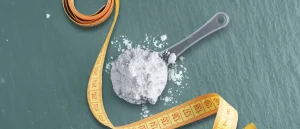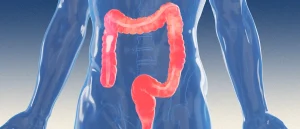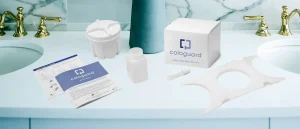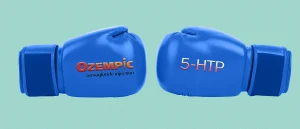5 Potential Acupressure Mat Benefits That May Surprise You
- By Brittany Risher Englert
- February 26, 2024
Our product picks are editor-tested, expert-approved. We may earn a commission through links on our site.
A few years ago, a long-time patient came to see licensed acupuncturist Tom Ingegno D.A.C.M., M.S.O.M., L.Ac. “I bought an acupressure mat,” he told Ingegno. “I’m going to replace you with it.”
Two weeks later, the patient returned. “It doesn’t do the same thing,” he said.
It’s not surprising that a mat covered with little spikes doesn’t provide the same results as a human trained in using needles to alleviate back pain, headaches, and other ailments. But that’s not to say acupressure mat benefits are completely off the table. After all, these mats are often significantly cheaper than seeing a professional—and you can do it from home whenever your schedule allows for a lay down.
Ahead, acupuncturists explain what acupressure even is, what research suggests the top acupressure mat benefits are, and which ones to buy if you happen to go that route.
About the Experts
Tsao-Lin Moy L.Ac., M.S.O.M., is a licensed acupuncturist and founder of Integrative Healing Arts in New York City, which uses Chinese medicine, acupuncture, herbal medicine, and energy healing to treat patients.
Tom Ingegno D.A.C.M., M.S.O.M., L.Ac., is a licensed acupuncturist with 23 years of practice. He’s the lead clinician and founder of Charm City Integrative Health in Baltimore, Maryland.
What Is Acupressure?
Acupressure is a type of body work that originated in China (1). It’s also a type of acupuncture (1). The difference: rather than piercing the skin with thin needles, the practitioner stimulates specific spots (or acupoints) on the body by pressing on them with their fingers or a tool.
According to Traditional Chinese Medicine, the different acupoints are located on meridians, or energy channels, in the body. Each meridian is connected to different organs, so acupressure simulates both the acupoint and the corresponding part of the body (1, 2). For example, there’s an acupoint on the arch of the foot that corresponds to the kidney.
Any licensed acupuncturist as well as many Asian-style massage therapists can perform acupressure. They take their knowledge of the person’s complaints (think: recurrent headaches or dull shoulder pain) as well as feedback from feeling along the meridians to determine which acupoints to target and, in turn, address different health concerns, says licensed acupuncturist Tsao-Lin Moy L.Ac., M.S.O.M.
What Is an Acupressure Mat?
Anyone can try DIY acupressure—charts of acupoints and what each may help treat are just a Google search away. Simply apply firm, but not painful, pressure to your chosen area, and you may experience some relief.
Acupressure mats are more passive and may add an element of relaxation—that is, if you consider being poked all over your back at once to be relaxing. These foam mats are covered with small spikes that press into the skin as you lie back onto them. The companies selling them claim this delivers an experience similar to acupressure, but experts say there are a few key differences—the first being that you’re lying on a studded mat.
Depending on the size the acupressure mat covers most of your back (and sometimes your butt and the back of your legs) when you lie face-up. While you can lie face-down, you may want to wear a shirt or put a thin towel down since your abdomen is a lot softer than your back, Ingegno says. This also helps to protect exposed nipples.
Either way, don’t expect miracles with an acupressure mat. The mat isn’t pressing into specific acupoints to treat a certain ailment. “The application of acupressure or acupuncture is done with the understanding of a skill underneath it. It’s not just poking people,” Moy says. “If you have conditions you want to treat, consider working with a licensed acupuncturist.”
What Are the Benefits of an Acupressure Mat?
Depending on why you wish to use one, you still may find some advantages to using an acupressure mat. There’s evidence—scientific or anecdotal—that these may help with the following.
Stress relief and relaxation
“The little bit of pressure of the points digging into the skin brings more circulation to the surface of the body,” Ingegno explains. “That triggers a parasympathetic nervous system response.”
This is the rest and digest part of the nervous system, which causes a slower heart beat and relaxation of many muscles. You may find yourself feeling calmer and breathing deeper during (and after) your acupressure mat session. (To maximize this benefit, leave your phone in another room.)
But you don’t need a porcupine mat to relax—you just need to make the time. In a recent study, people who practiced relaxation with or without an acupressure mat for three weeks reported less stress (3).
“When you do things that look like rest and digest—such as deep breathing, sitting in a warm bath, massage, or acupuncture—it tricks the brain into thinking you’re resting because it triggers a parasympathetic nervous system response,” Ingegno adds.
Improved digestion
Studies suggest that acupressure (not mats) may help relieve nausea in pregnant people (who were experiencing severe nausea) and those receiving cancer treatments (4, 5, 6). Just keep in mind, most of these studies used an acupoint in the wrist and mats likely provide light stimulation there. If an acupressure mat settles your stomach, it may be due to the relaxation response, Moy says. “If we don’t have adrenaline flowing, it helps with digestion,” she says.
Pain management
Lying on an acupressure mat for an hour a day helped alleviate low back pain and improve quality of life in a small study of 44 people published in a small study (7). Similarly, a 2012 study consisting of 82 people reported that an acupressure mat significantly reduced chronic low back and neck pain (8).
The authors of the 2012 study note that body work treatments (such as acupressure) increase the firing of neurons in the area where pressure is applied, which may boost pain tolerance. However, it’s important to note that in both studies, the people were also doing exercise or physical therapy targeted to easing their pain.
Better sleep
Using an acupressure mat on a regular basis anytime of day may help if sleep doesn’t come easily (9). “In general, if you’re able to do something for yourself to manage your nervous system so you don’t go into fight or flight all the time, you will have better quality sleep,” Moy says.
More energy
You’re not going to get up and run a marathon right after using an acupressure mat, but it might make you feel like you don’t need that afternoon coffee.
“Microstimulation on the skin starts to move your circulation and lymph system and helps clear out metabolic waste,” Moy says. “Then you don’t feel groggy and your body can function better.”
Tips for Picking the Right Acupressure Mat
If you’re interested in buying an acupressure mat, ignore the marketing. Sure, a mat called the Bed of Nails sounds cool, but read the details. Each acupressure mat provides different stimulation, and some brands offer different levels of intensity.
Also keep in mind that most mats make the same claims as far as what they’ll do for you. To sift through them all, Ingegno suggests checking the reviews to give you a sense of what the mat may be like when you’re on it.
Lastly, Moy recommends picking a mat that you can easily clean. “Even though they don’t technically pierce skin, they may breach some of the skin layer. Then you can have bacteria and can get an infection,” she explains. You could also wear a shirt or put down a thin towel to keep your mat clean.
Best Acupressure Mats
These mats receive rave online reviews.
Frequently Asked Questions
Who shouldn’t use acupressure mats?
Anyone with a specific condition that they wish to treat is better off seeing a licensed acupuncturist than using these mats. Acupressure mats are nonspecific and can’t provide customized treatment. Additionally, people who have open wounds on their backs or thin skin should use these mats with caution.
Does an acupressure mat hit key pressure points?
No. Most acupressure mats cover a broad area and are nonspecific. They don’t target any specific pressure points.
References
1. Piyush Mehta, et al. (2017). Contemporary acupressure therapy: Adroit cure for painless recovery of therapeutic ailments.
2. Juan Yang, et al. (2021). Acupressure: An Effective and Feasible Alternative Treatment for Anxiety During the COVID-19 Pandemic.
3. Joanna Kisker, et al. (2024). Regular use of acupressure mats reduces perceived stress at subjective but not psychophysiological levels: Insights from a three-week relaxation training.
4. Heather Greenlee, et al. (2017). Clinical practice guidelines on the evidence-based use of integrative therapies during and following breast cancer treatment.
5. Jing-Yu Tan, et al. (2022). Effects of auricular acupressure on chemotherapy-induced nausea and vomiting in breast cancer patients: a preliminary randomized controlled trial.
6. Nor Azila Mohd Nafiah, et al. (2022). Effect of Acupressure at P6 on Nausea and Vomiting in Women with Hyperemesis Gravidarum: A Randomized Controlled Trial.
7. Antonio Frizziero, et al. (2021). Efficacy of an Acupressure Mat in Association with Therapeutic Exercise in the Management of Chronic Low Back Pain: A Prospective Randomized Controlled Study.
8. Claudia Hohmann, et al. (2012). The Benefit of a Mechanical Needle Stimulation Pad in Patients with Chronic Neck and Lower Back Pain: Two Randomized Controlled Pilot Studies.
9. Tyler LeBouef, et al. (2023.) Physiology, Autonomic Nervous System.












